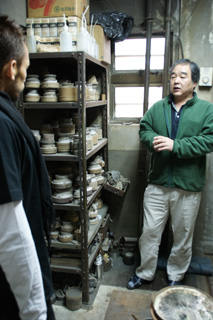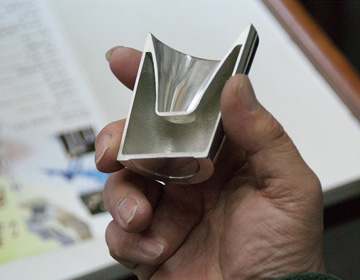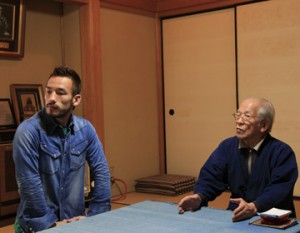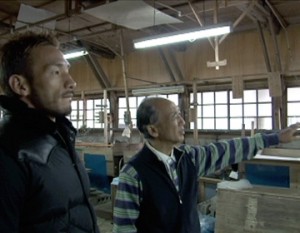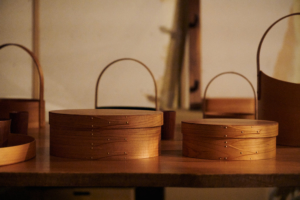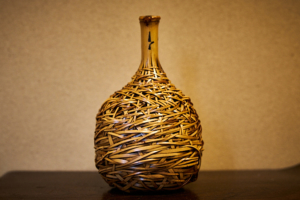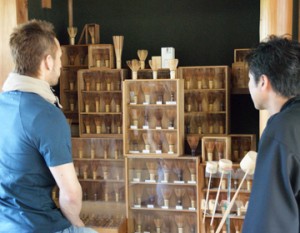“Tin” has been used from the old days
Tin is a material that has been used since the early days of human history. Tin water vases were found from the ruins of Ancient Egypt from around 1500 BC, and in Europe, it is called ”pewter” which was used as a replacement for silver from the old days.
In Japan, it was an old custom to use tin flasks to offer sacred ”sake” in the Imperial Palace. Today, they sometimes refer to Japanese ”sake” as ”the tin” in the Court, which is a reminiscent of the old tradition. It was in the Edo period that commoners began to use tin wares in their everyday life. It is also around this time that tin ware production and merchandising started to take place in Osaka.

Material which is hard to process
Here at ”Osaka Naniwa Suzuki,” Tatsumasa Imai and other traditional craftsmen roll up their sleeves to make tin products.
Tin is very soft as a metal and therefore it is difficult to process. That’s why they can’t use machines to make products such as containers and vessels, and most of the production is done by hand. Although, tin has been a material used since the ancient days, traditional craftsmanship is needed to process it.
A tumbler that makes the most of the characteristics of tin
Today, tin flasks and tin tea ware are popular items, in addition to tin tumblers that are perfect for enjoying beer. Tin has high thermal conductivity, so when you pour cold beer in it, its surface begins to develop water droplets, which creates an appetizing glass of beer. Tin containers keep cold things cold, hot things hot. Tin wares will continue to be useful in adding a spice to people’s lives.
